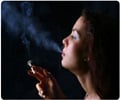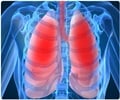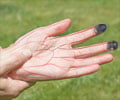We use them to text, tweet, post and, sometimes, make a call. Now, smartphones are helping with public health research.

"We're examining the possible mechanisms underlying the relationship between being close to a tobacco retail outlet and not being able to successfully quit smoking," said Lorraine Reitzel, associate professor of health in the UH College of Education. "We think it's because tobacco retail outlets might cue a greater urge to smoke within the person attempting to quit, maybe because of product advertising, a learned association between the retail outlet and purchasing cigarettes, or simply the greater availability and access to cigarettes that a close retail outlet provides."
Reitzel is part of a growing health department at the college. Recruited from MD Anderson Cancer Center, her research focuses on understanding individual and environmental influences that lead to health risk behaviors. She's interested in developing tobacco dependence interventions for low socio-economic areas and groups.
"I'm interested in better understanding whatever is preventing these smokers from successfully quitting, and then learning how to tailor treatments or public policy to help them," she said.
Participants carried a smart phone to collect data about their real-time, in-the-moment experiences throughout their daily travels during the quitting process. The study examined data collected from them before quitting through one week after their "quit day."
"When people were answering questions about their urge to smoke, we knew where they were," she said. "We used that information to better understand what the tobacco retailer outlet environment was like around them at the same moment they were describing their urge."
Advertisement
"From a policy perspective, this suggests that if we are going to help people quit smoking, especially those in lower income areas, which tend to have a higher prevalence of tobacco stores, we need to think about disallowing the sale of tobacco products in close proximity to residential areas to make it more difficult to get tobacco when the urge to smoke strikes," Reitzel said. "If people can't access cigarettes within three to five minutes, the urge to smoke usually passes."
Advertisement
"Many people try to quit smoking upwards of eight, nine, 10 times before they're successful," she said. "For the rest of their lives they have to be vigilant and fight to stay tobacco-free."
Source-Eurekalert














